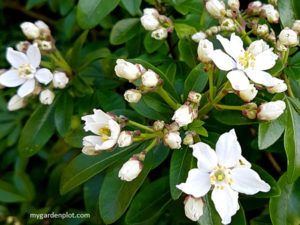Best Loppers For Pruning
Loppers are a step up from hand pruners. This buyers guide outlines essential features for buying loppers and how to choose the best loppers for pruning.
Pruning Tips: When To Prune Plants And What Pruning Tools To Use
We often hear about the 3 Ds of pruning. We think it should be the 4 Ds: dead, diseased, damaged, and let’s add disorderly to that list – we have all seen a branch or stem that goes entirely against all others, you know, just doing its own thing. So for us, it’s the 4 Ds: Dead, Diseased, Damaged And Disorderly.
Buyer’s Guide:
Why Prune?
Why prune? To maintain healthy and attractive plants in the garden. There are times when it is important to prune and eliminate crossing and rubbing branches to reduce congested growth and foster healthy conditions to discourage diseases. Pruning additionally improves a plant’s shape to make it more attractive by correcting its natural form. Of course, removing unwanted growth and thinning out twiggy or straggly stem redirects the energy to more vigorous and healthy branches. We also often need to train a young plant to set it in the right direction for an appealing form or encourage better flower or fruit production. Perhaps you need to prune to reduce the plant size or remove hazardous branches that are in the way of a path or potentially damage property – this type of pruning is best left to a professional arborist and hiring a reputable team to do the job, especially when it comes to large trees.
Whether pruning to balance growth, removing dead or disease stems, doing routine annual cuts, renovation or hard pruning, plants’ requirements will differ. In each of the plant recommendations below, we’ve added notes on how and when to prune it.
Loppers are a step up from hand pruners. This buyers guide outlines essential features for buying loppers and how to choose the best loppers for pruning.
Everything you need to know about garden handsaws, how to choose the best pruning saw, blades with impulse hardened teeth and reviews on pruning saws.
Best hand pruners and buyer's guide with the main points to consider when buying garden pruners. Reviews on bypass and anvil pruners.
The Campanula or bellflower are low-growing perennials. Here are recommendations and tips on where to plant, and how to grow and care for them.
Ilex crenata or evergreen Japanese holly is a good alternative to boxwood shrub. Here are tips how to grow, care and prune Japanese Holly.
Hypericum (St John's wort) has showy yellow flowers. Learn where to plant, how to grow, care and prune Hypericum calycinum groundcover and shrubby types.
Osmanthus heterophyllus or false holly is an evergreen plant similar to Christmas holly. Learn how to grow and prune false holly shrub.
Jasminum nudiflorum or winter jasmine adds vibrant yellow colour to a winter garden. Learn how to grow, care and prune winter jasmine plant.

Choisya ternate, also known as Mexican orange blossom or Mexican mock orange, is a fragrant flowering, evergreen shrub. Tips how to grow and prune.
Guide on how to grow Daboecia cantabrica (Irish heath) showing how easy it is to plant, care and prune this low-growing, evergreen shrub.
Heather and heath guide with details where to plant and how to grow and prune your shrubs. A popular low-growing evergreen flowering plant.
Pieris japonica is a perfect year-round evergreen shrub. This guide provides recommendations, and info where to plant and how to grow Pieris.